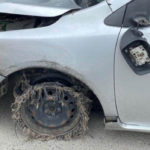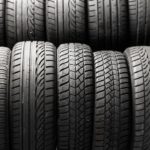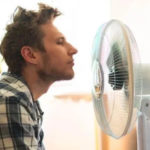Extreme Heat Wave: The scorching summer heat can push outdoor temperatures to a sweltering 50 degrees Celsius. Such extreme heat is a challenging driving condition, as it can cause heat stroke and glare, potentially leading to loss of control. Therefore, drivers need to be aware of the precautions when driving long distances in hot weather to prevent and manage heat-related emergencies.
Mr. Nguyen Xuan Huu from Pham Van Dong, Nam Tu Liem, Hanoi, shares his experience, “My office is about 12 kilometers from my home, and it usually takes me around 50 minutes to drive. However, during the heatwave, it takes me over an hour to get home. Not to mention, my work is flexible, and I sometimes have to go out in the scorching midday heat, which is incredibly uncomfortable, even with air conditioning.”
Ms. Tran Thi Thu from Cau Giay District echoes a similar sentiment, “I commute to work by car, but I still feel exhausted in the hot weather and heavy traffic. Since the beginning of summer, my car’s air conditioning system has struggled to keep up with the rising outdoor temperatures, reaching 45 degrees Celsius. I often have to set the temperature below 20 degrees, yet it still doesn’t feel cool enough. I haven’t had time to get it serviced. Getting into a car during a heatwave without proper air conditioning is like stepping into a sauna. The hot weather also adds to the traffic congestion, making it a slow crawl to get anywhere.”

Illustrative image: KT
Tips for Driving in Extreme Heat
The most significant hazards when driving in extreme heat are glare, heat stroke, fatigue, stress, and low blood pressure, all of which affect your ability to observe and react to other vehicles on the road. Therefore, it’s best to avoid busy routes and areas prone to traffic jams. Always keep water in your vehicle, especially cool water, to stay hydrated and prevent dehydration-related issues like glare and dizziness.
Glare is a common issue when driving under the sun. To mitigate this, maintain a steady speed and a safe distance from the vehicle in front of you. Avoid sudden stops or braking, as the driver behind you may react slowly and cause a rear-end collision.
Another crucial tip for driving in hot weather is to use your air conditioning system effectively. Set it to draw in outside air or lower the windows to keep the car cool. This helps remove the hot air trapped inside the vehicle quickly and efficiently. If your air conditioning is weak, you can try cleaning the air filter by knocking it gently on the ground to remove dust and debris. Do not wash it with water. If your air conditioning still doesn’t perform adequately, have it serviced or repaired. Once it’s functioning well, avoid overusing it to prevent heat stroke.
Moreover, many people tend to set their car’s air conditioning to very low temperatures without realizing that heat stroke in a car can be more dangerous than stepping out of a cooled room into the hot outdoors. The reason is that the car’s interior accumulates CO2, and the direct airflow from the vents can cause a significant temperature difference between the car and the outside environment. When you step out, you may experience heat stroke symptoms like dizziness or even fainting.
To prevent heat stroke, turn off the air conditioning and fans a few minutes before arriving at your destination to allow your body to adjust to the outside temperature gradually. When starting your journey, open the windows or turn on the ventilation fan to blow out the hot air, then close the windows and adjust the air conditioning temperature and fan speed accordingly to give your body time to acclimate.
Another essential consideration during hot weather driving is vehicle maintenance, especially tire pressure. Ensure your tire pressure is within the recommended range for optimal fuel efficiency. Maintaining proper tire pressure not only saves fuel but also improves handling and prevents tire overheating, which can damage connected components like wheels, brakes, and other related parts.
Keeping your windshield clean is also crucial. A dirty windshield can intensify glare due to sunlight reflecting off dirt and tiny particles. Therefore, before embarking on a trip, clean your windshield inside and out, removing any smudges or streaks that may obstruct your vision while driving.
Precautions for Overheated Cars or Breakdowns During Hot Weather
Summer heat can accelerate the wear and tear of vehicle components and create unforeseen dangers. Therefore, drivers should be aware of potential issues and how to handle them if their car breaks down on the road.
When driving in hot weather, always pay attention to the engine coolant temperature warning light. If it illuminates while you’re on the move, it indicates that your engine is overheating. Pull over to the side of the road (preferably in a shaded area) and stop. Do not open the radiator cap until the engine has completely cooled down, as steam and hot liquid can escape and cause injury.
Additionally, call for roadside assistance if you’re stranded in a remote area and cannot restart your vehicle.
Items to Avoid Leaving in Your Car During Hot Weather

Items to avoid leaving in your car during hot weather. (Illustrative image: Honda)
Certain items, when left in a car during hot weather, can pose safety and hygiene risks. It is essential to be mindful of these potential hazards to ensure your safety and avoid unpleasant surprises. These items include lighters, fire extinguishers, aerosol cans, perfume sprays, facial mists, hair sprays, and any other pressurized containers. When exposed to high temperatures, the pressure inside these containers can build up, leading to explosions or the release of flammable propellants, which could result in a fire if exposed to an ignition source.
Additionally, electronic devices such as laptops, tablets, phones, and power banks are made of heat-conductive metals and should not be left in a car without air conditioning. The high temperatures can cause the electronic circuits and resistors to overheat abnormally, reducing their lifespan or even causing immediate damage. These devices contain lithium-ion batteries, which are highly sensitive to temperature. Prolonged exposure to high temperatures, such as in a closed car parked in direct sunlight, can cause the batteries to melt or even explode.
Furthermore, water bottles and eyeglasses can also absorb heat and contribute to the overall temperature rise inside the vehicle, potentially leading to explosions or fires.
Stay safe and keep these precautions in mind during hot weather driving!
According to VOV































![[Unlock] The easiest and fastest way to send files through Gmail for beginners](https://meo.tips/wp-content/uploads/2023/12/bat-mi-cac-2-100x70.png)



